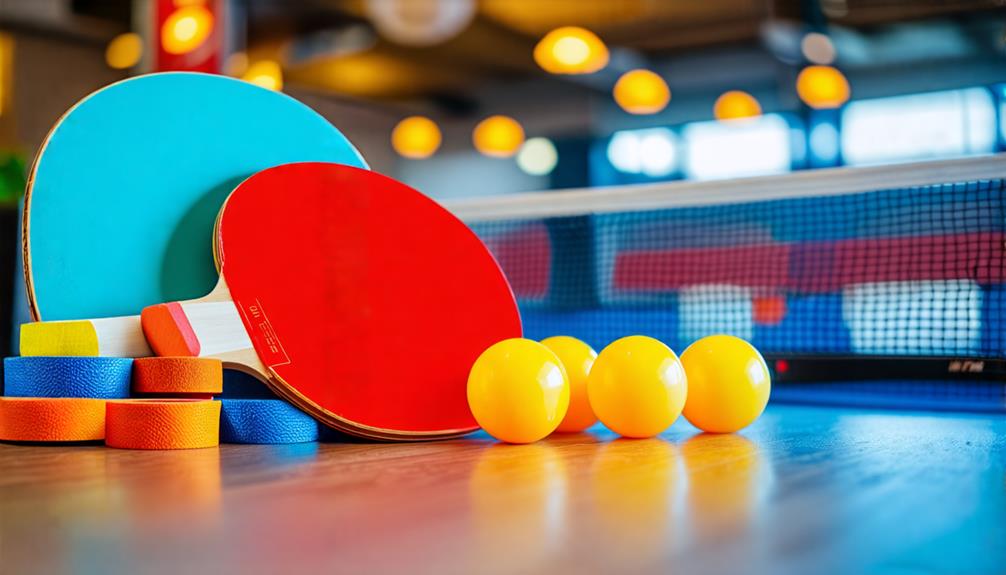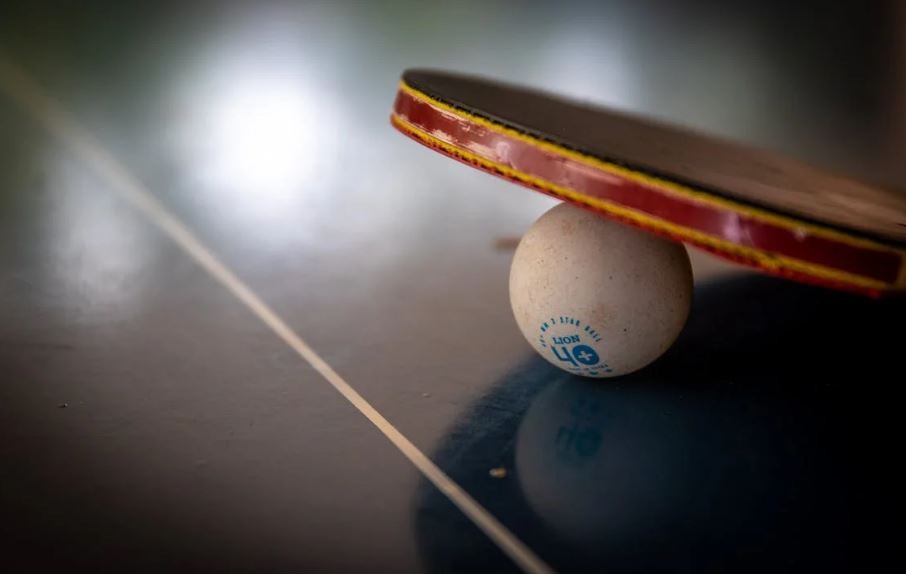Ping Pong Rules and Scoring: A Beginner’s Guide
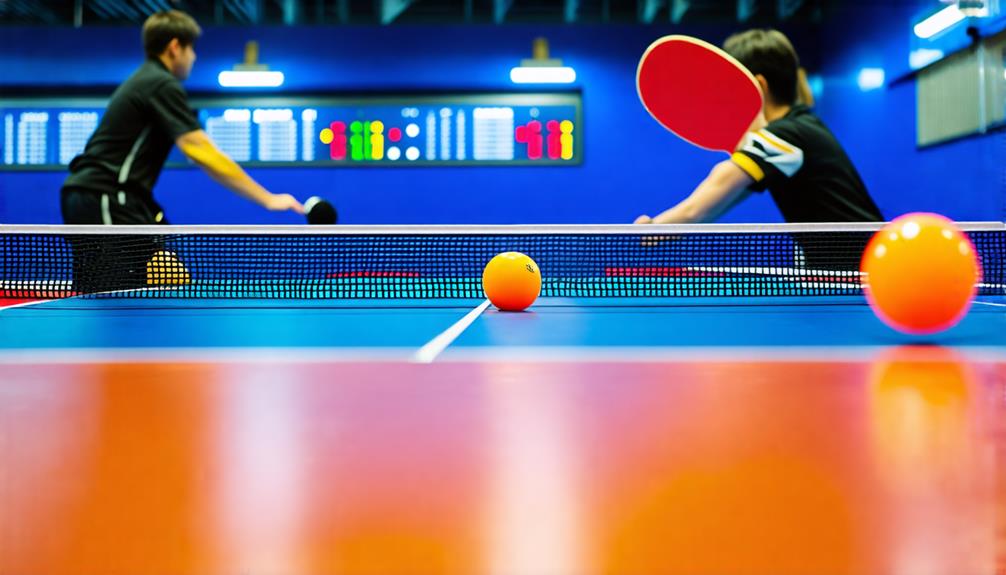
If you're new to ping pong, understanding the rules and scoring system is vital for enjoying the game. Each match has a structured format, beginning with the serve and the method for scoring points. Proper serving is as crucial as making winning shots. However, there are common mistakes that can challenge even experienced players. To avoid these pitfalls and enhance your gameplay, let's explore the key aspects that will set you on the right path.
Basic Game Structure
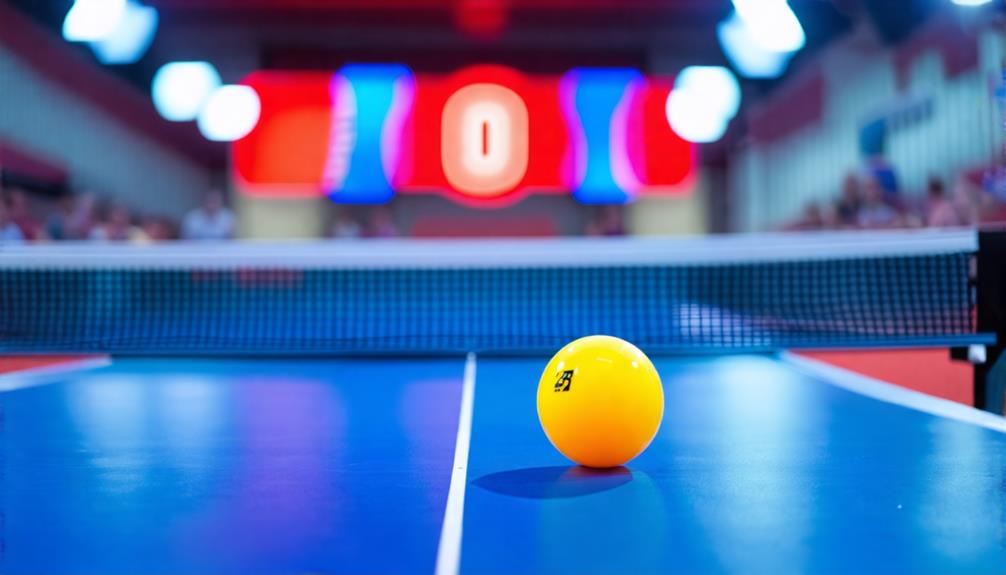
In a standard table tennis match, you'll play either 3 to 5 games in regional competitions or 4 to 7 games in official tournaments, aiming to be the first to reach 11 points with a two-point lead. The game revolves around a scoring system where each player takes turns serving the ball every two points. This rotation keeps the game dynamic and ensures that both players have equal opportunities to score.
When the score reaches 10-10, players switch serves after every point, heightening the tension as every serve becomes crucial. The objective is to outmaneuver your opponent and land the ball on their side of the table, targeting the edges and corners to catch them off guard. Maintaining focus is vital, especially since players must switch sides after one player reaches 5 points in the final game. This rule ensures fair play by allowing both players to adapt to any environmental factors. Understanding this basic game structure will help you navigate matches with confidence and strategy, enhancing your overall performance as a player.
Serving Rules
Understanding the basic game structure sets the stage for mastering the serving rules, which are crucial for gaining an advantage in table tennis matches. To execute a legal serve, the ball must rest on your open palm and be tossed at least 6 inches high before being struck. In singles play, you can serve to any part of your opponent's side, but in doubles, the serve must be diagonal.
If your serve hits the net but still lands in the correct area on your opponent's side, it's called a let serve and is replayed without penalty. Adherence to official rules is essential; any misstep, such as not tossing the ball high enough or hitting it before it bounces, results in your opponent scoring a point. Players switch serving every two points. Once the score reaches 10-10, players serve one point at a time, adding more strategy to each serve.
Scoring System

The scoring system in table tennis is centered around reaching 11 points first, while maintaining a minimum 2-point lead over your opponent. This means each point is crucial, necessitating constant focus and precision throughout the match. In singles matches, either player can score points irrespective of who serves, making every rally significant for gaining an advantage.
Here's a concise overview of how scoring operates:
| Situation | Action Taken | Points Awarded |
|---|---|---|
| Player A wins rally | Player A returns the ball successfully | Player A scores 1 point |
| Player B fails to return | Player A scores automatically | Player A scores 1 point |
| 10-10 Tie | Play continues until a 2-point lead | Extended rallies |
| Player A serves | Ball is returned successfully | Points continue to be scored |
| Game ends | First player to 11 points wins | Winner declared |
According to table tennis rules, if the score reaches 10-10, play continues until a player achieves a 2-point lead. This scoring system introduces excitement and strategy into the game, underscoring the importance of adaptability and awareness. This system is designed to ensure fairness and competitiveness, making every moment in the game critical for both players.
Rally and Hitting
Rallies in table tennis require precise timing, as players must wait for the ball to bounce on their side before making a return. Hitting the ball before it bounces results in losing the point. When the server serves, they aim to land the ball on your half of the table. Anticipate and react quickly to return the ball effectively.
Hitting the ball outside the designated play area also results in a lost point. During a rally, you may switch hands, but you're only allowed to use one racket at a time. If the ball hits the net during play but still lands on your opponent's side, the rally continues. Mastering these fundamentals will enhance your game and keep rallies engaging. Focus on timing your shots and positioning yourself correctly to become a skilled player.
Doubles Play

In doubles play, you and your partner must work together, alternating hits and serving to outmaneuver your opponents. The game begins with the designated server from your team serving diagonally to the receiver from the opposing team. Each player serves for two points before switching, ensuring a fair distribution of turns. When the score reaches 10-10, players will alternate serving one point each until the game concludes, adding an exciting twist to the scoring.
Effective communication is crucial in doubles play. You and your partner need to coordinate your movements to avoid interfering with each other during rallies, as only one player from each team can hit the ball in a single turn. If your serve hits the net but lands correctly in the service box, it's considered a let serve, and you get to replay it without penalty.
Maintaining clarity in your roles is essential; knowing when to step back and let your partner take control can make all the difference. Practice your serves and develop a rhythm with your partner to improve your overall performance in doubles matches. With teamwork and strategy, you'll be well on your way to dominating the table!
Equipment Specifications
When you pick up a paddle, you'll notice it adheres to specific design requirements: one side must be red, and the other must be black. The ball you'll use is also regulated, weighing 2.7 grams and measuring 40 mm in diameter. Understanding these specifications is crucial for optimizing your gameplay.
Paddle Design Requirements
Designing a table tennis paddle requires adherence to specific equipment specifications to ensure optimal performance and compliance with international standards. A well-constructed paddle can significantly enhance your game, making it essential to understand these requirements.
Key Specifications to Consider:
- Dimensions: The paddle should be approximately 17 cm in length and 15 cm in width, predominantly constructed from wood.
- Color: Each paddle must feature one red side and one black side, allowing for the use of different rubber types to achieve varied spins and strategies.
When selecting your paddle, pay attention to the rubber surfaces, as their thickness and texture can greatly influence speed and spin during play.
Regular inspections for wear and damage are crucial for maintaining optimal performance. By using a paddle that meets these specifications, you'll comply with regulations and elevate your game to the next level.
Standard Ball Specifications
Table tennis balls must meet specific standards to ensure consistent performance and fairness in the game. For official competitions, the International Table Tennis Federation (ITTF) mandates that balls weigh exactly 2.7 grams and have a diameter of 40 mm. This uniformity allows you to focus on your skills without worrying about equipment discrepancies.
Table tennis balls are available in two colors: orange and white. Your choice can depend on the lighting conditions of your playing environment or personal preference. The surface of the ball is made of plastic, designed to provide consistent bounce and performance during matches.
Using ITTF-approved balls for official matches is crucial, as they comply with the necessary specifications. Non-standard balls may cause unfair advantages or gameplay inconsistencies. Therefore, whether practicing at home or competing in official tournaments, always ensure the balls meet these standards. Adhering to these guidelines ensures a fair and competitive game of table tennis.
Match Format

In ping pong, matches are typically organized in a best-of format, meaning you need to win a specified number of games to secure the match. Each game is played to 11 points, and you must have a two-point lead to win. Understanding these rules is crucial for developing a successful strategy.
Game Structure Overview
A match can consist of 3 to 5 games in regional competitions, while official tournaments typically feature 4 to 7 games in a best-of-4 format. Each game is played to 11 points, and a player must win by at least a 2-point lead if the score reaches 10-10. This structure ensures that every player has a fair opportunity to showcase their skills.
Key aspects of the game structure include:
- Side Switching: Players switch sides after one player reaches 5 points in the final game, promoting fairness.
- Scoring System: Both the server and receiver can score points on every rally, keeping the action engaging and competitive.
Understanding these rules and their impact on gameplay is crucial for any player. Each serve presents an opportunity to gain points, making every moment in the match exciting.
Whether playing casually or competitively, knowing the game structure enhances your experience and helps you strategize effectively.
Winning Conditions Explained
Understanding the winning conditions in ping pong is crucial, as they outline the structure of a match and determine the overall victor. In a standard game of table tennis, the first player to reach 11 points wins, but you must win by at least 2 points if the score reaches 10-10. This rule emphasizes the need for focus and strategy during critical moments.
Matches can consist of 3 to 5 games in regional competitions or 4 to 7 games in official tournaments. The overall winner is the first to win the majority of games. During each game, players switch serving every two points until someone reaches 10-10, at which point serves alternate for each point.
To ensure fairness, players switch sides after one player or team reaches 5 points in the final game. These basic rules shape the competition and add excitement to every match, so keep them in mind as you step into the thrilling world of ping pong.
Tiebreaker Rules
Tiebreaker rules in table tennis ensure the game remains intense and competitive, especially when the score reaches 10-10. At this critical juncture, the first player or team to score two consecutive points wins the game, highlighting the importance of performance under pressure.
Key aspects of the tiebreaker rules include:
- Switching Sides: Players switch sides after one player or team scores five points in the final game. This ensures fairness by mitigating any potential advantage from playing on a particular side.
- Two-Point Lead: The game continues until one player or team gains a 2-point lead, adding to the tension and excitement.
Understanding these tiebreaker rules allows you to appreciate the strategic play that unfolds during high-stakes moments. Every point can drastically change the outcome, making the final moments of the game thrilling whether you're watching or playing.
Common Mistakes
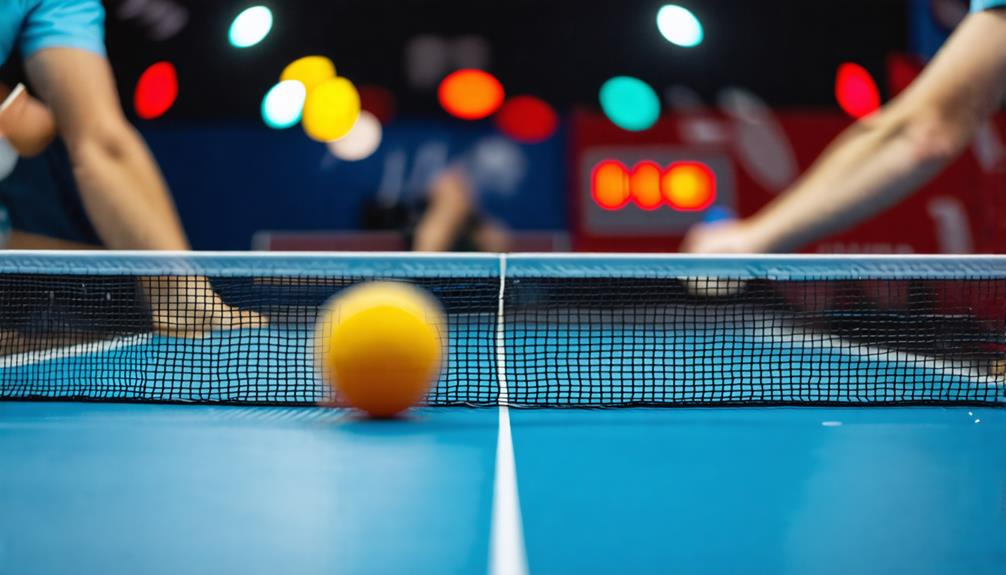
Many players make critical mistakes that can cost them points and disrupt their flow during a match. One common error is serving the ball without allowing it to bounce on your side first, resulting in an automatic loss of the point. Additionally, beginners often forget to switch sides after one player reaches 5 points in the final game, affecting performance due to different playing conditions.
Another frequent mistake is volleying the ball, meaning hitting it before it bounces. This is against the rules and results in losing the point. When serving, you must ensure a legal toss; the ball should rise at least 6 inches and not touch the net. If your serve hits the net, it's called a let, and you get to serve again. Failing to follow the correct serving procedure can lead to faults. In doubles play, understanding the proper serving rotation is crucial. Neglecting this can confuse your partner and award points to your opponents. By avoiding these common mistakes, you'll improve your game and enjoy ping pong even more.
Conclusion
Now that you understand the basic rules and scoring of ping pong, you're ready to hit the table! Practice your serves and maintain a good rally to enhance your skills. Remember, having fun is just as important as winning. Whether you're playing singles or doubles, keep these guidelines in mind to enjoy every match. So grab your paddle, invite a friend, and start playing!
